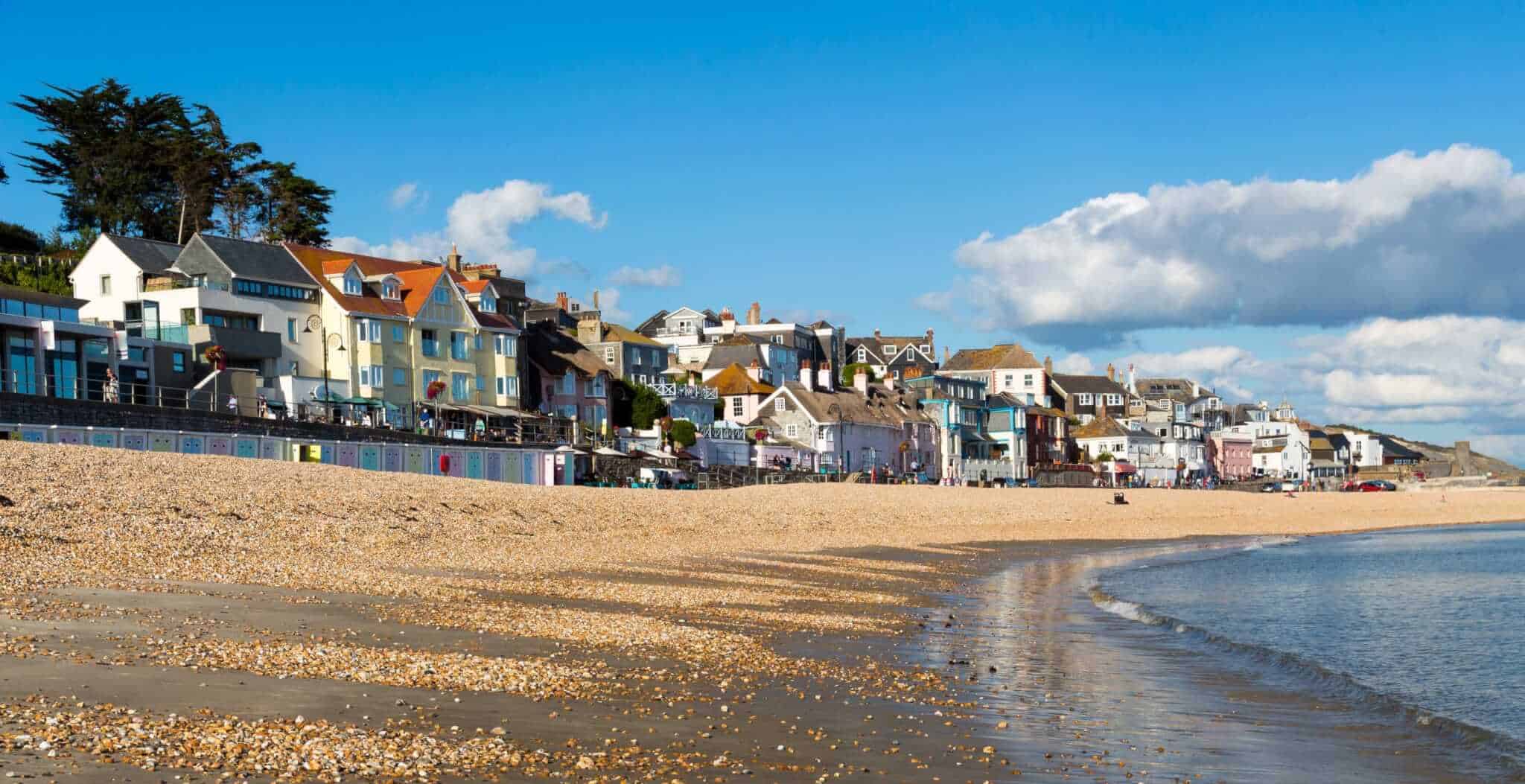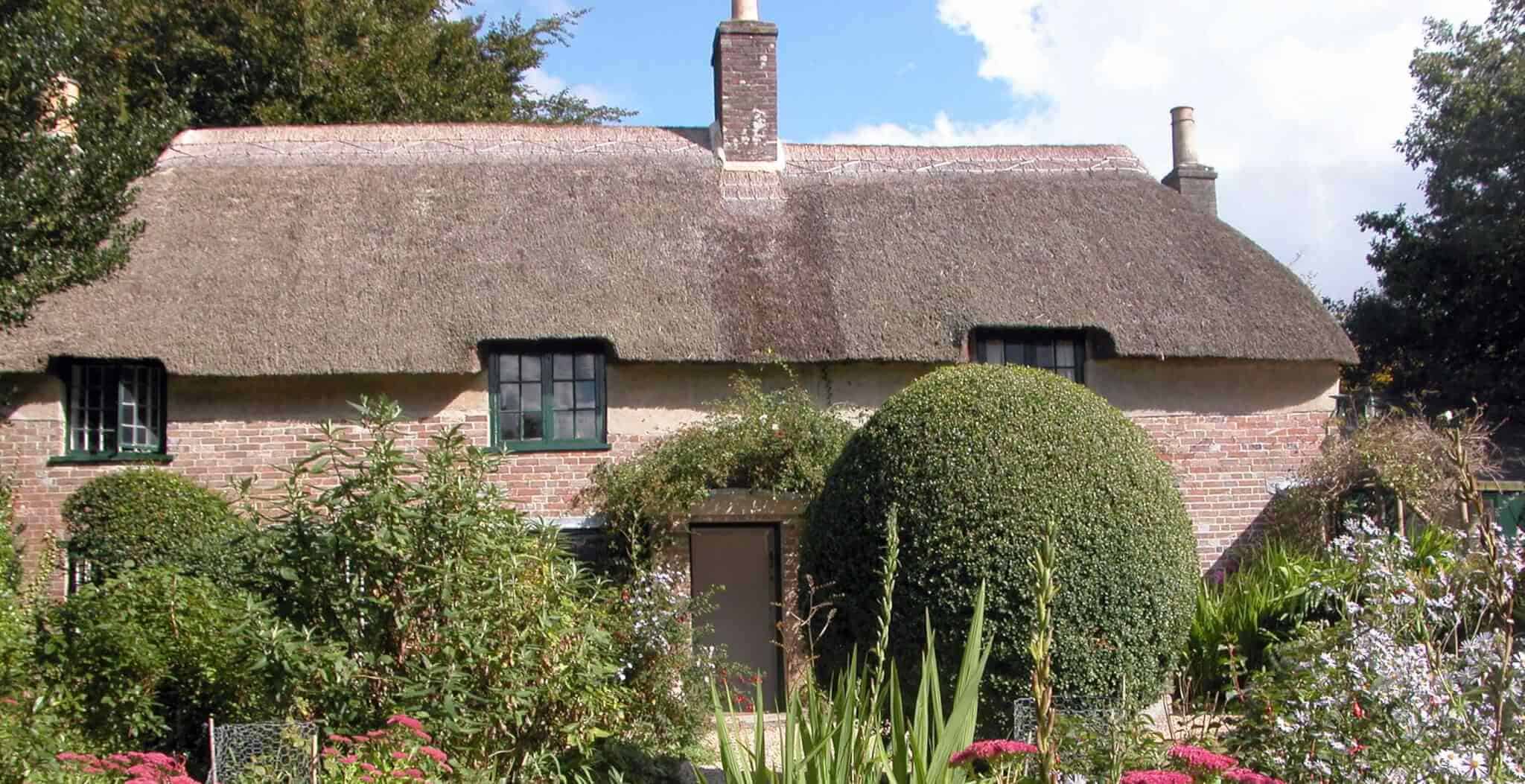Welcome to Lyme Regis, the ‘Pearl of Dorset’, situated at the heart of the world famous Jurassic Coast.
Lyme Regis is an historic seaside resort and fishing port. Situated at the mouth of the river Lym in the county of Dorset, Lyme is first mentioned in 774 in connection with a manor granted by the West Saxon King Cynewulf to Sherborne Abbey. Mentioned in the Domesday Book, Lyme received its first Royal Charter from King Edward I in 1284 to become Lyme ‘Regis’. In the 13th century it developed into an important port.
Lyme’s existence depended upon the Cobb, a small artificial harbour dating from the time of Edward I. Lyme is exposed to south-westerly gales, and the Cobb acts as both a harbour and a breakwater. Because of The Cobb, Lyme Regis became a shipbuilding centre and important port: as recently at 1780 it was larger than the port of Liverpool.
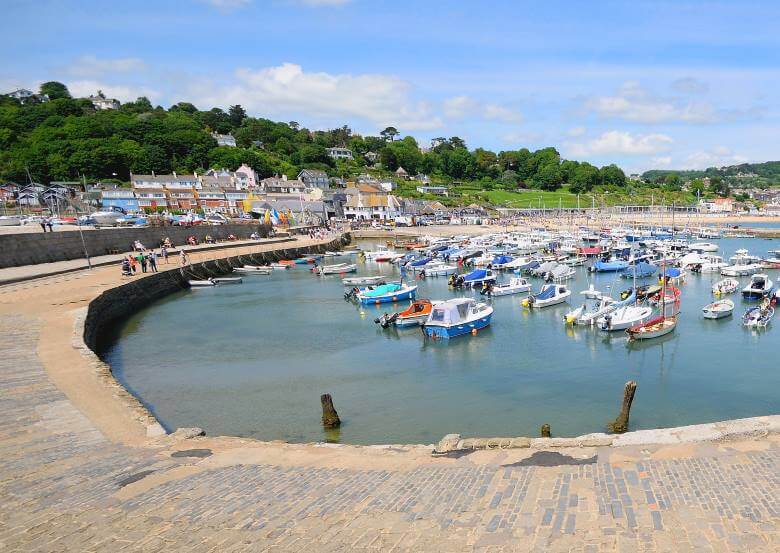
The Cobb is internationally known as the place where Louisa Musgrove fell from steps known locally as “Granny’s Teeth”, in Jane Austen’s novel “Persuasion”. Jane Austen stayed here in 1804, and several scenes from both ‘Persuasion’, and ‘Northanger Abbey’ are set in the area. Whilst in Lyme she wrote to her sister describing how she enjoyed bathing, walking on the Cobb, and dancing at the local Assembly Rooms. The Cobb also features in the late John Fowles novel “The French Lieutenants Woman” which was made into a very successful film.
Lyme Regis has not always been the quiet seaside resort it is today. The town was besieged by Royalist forces during the Civil War in 1644. The Duke of Monmouth landed here in 1685 in an effort to take the Crown from his uncle King James II. The Monmouth Rebellion ended in failure at the Battle of Sedgemoor: 23 rebels were later hung and quartered on the beach where he first stepped ashore.
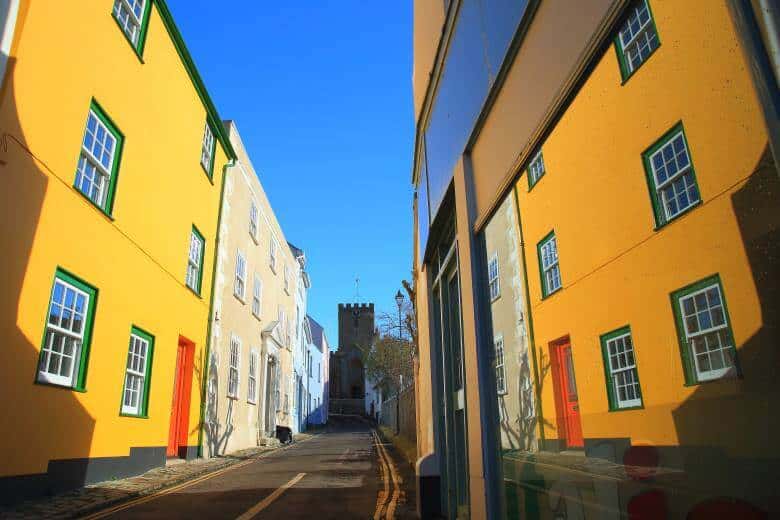
Lyme Regis is twinned with St George in Bermuda, the link being one of the town’s most famous sons, Admiral Sir George Somers (1554 – 1610). Sir George was an Elizabethan seafarer, MP, military leader and founder of Bermuda (The Somers Isles), England’s first Crown Colony. He was also instrumental in ensuring the survival of the Virginian colony of Jamestown by sailing to their rescue from Bermuda (where he had been shipwrecked) with fresh food and supplies. He returned to Bermuda to collect more supplies but fell ill and died in 1610. His heart was buried in Bermuda but his body, pickled in a barrel, was landed on the Cobb at Lyme Regis in 1618. A volley of muskets and cannon saluted his last journey to Whitchurch Canonicorum where his body is buried. It is widely believed that Shakespeare wrote “The Tempest” in tribute to Sir George Somers.
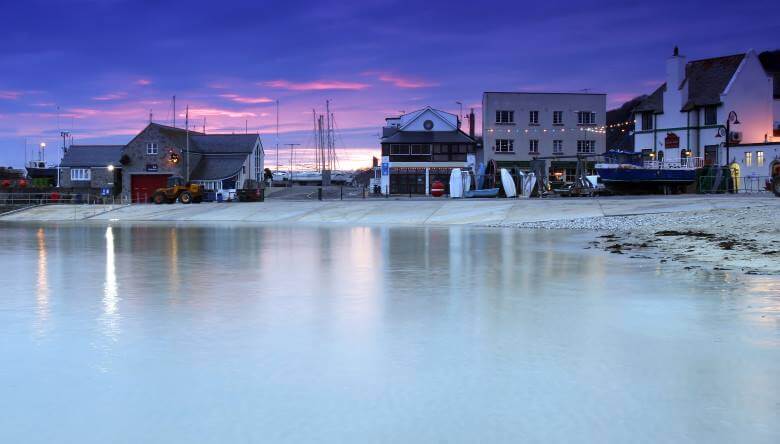
Lyme Regis is situated at the heart of the Jurassic Coast, so called because of the wealth of fossils found here. It was in the cliffs near Lyme that the famous Ichthyosaur was discovered in 1819 by Mary Anning, the daughter of a local fossil collector. She went on to find a complete Plesiosaur and the well preserved remains of a flying reptile.
The steep narrow streets of Lyme reflect its long history and the Georgian architecture is contemporary with its prosperity in the 18th century when sea bathing became fashionable.
Two centuries later Lyme Regis still relies on tourism for its survival. The town enjoys a beautiful setting with a sandy town beach and pebble beaches nearby, including the famous fossil beach at nearby Charmouth.
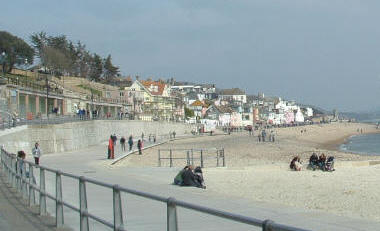
The promenade (above) runs from one end of town to the other. There are cafes, shops, pubs, inns and restaurants at both ends of the seafront. Boat and fishing trips run from the harbour. A walk along the famous Cobb is a must, and of course, a trip to Lyme Regis would not be complete without trying your hand at some fossil hunting!
Museums
View our interactive map of Museums in Britain for details of local galleries and museums.
Anglo-Saxon Remains
Try our interactive map of Anglo-Saxon Sites in Britain for details of nearby sites.
Battlefield Sites
Browse our interactive map of the Battlefield Sites in Britain for details of nearby sites.
Getting here
Lyme Regis is easily accessible by both road and rail, please try our UK Travel Guide for further information. Rail services from London Waterloo to Exeter stop at Axminster, local bus services link Axminster station to Lyme Regis.
